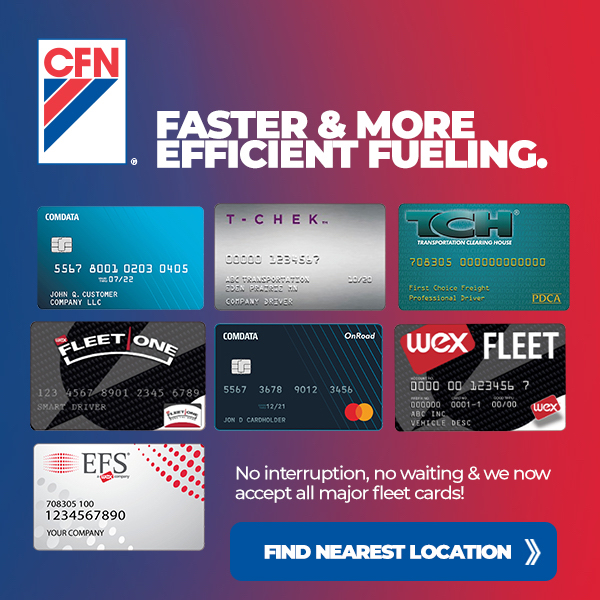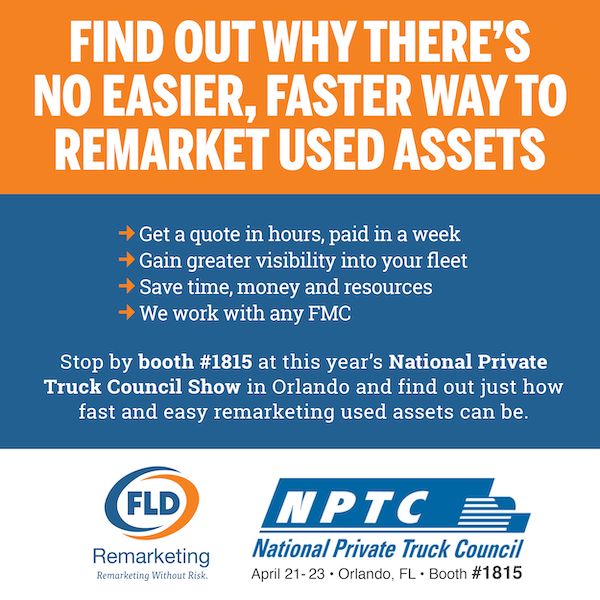
By Ed Pierce, Contributing Editor
The recently completed 2021 IARA Virtual Conference featured remarketing’s best and brightest from IARA (International Automotive Remarketers Alliance, the IAG (Independent Auction Group), the NAAA (National Auto Auction Association) and other leading organizations.
The consignors session, called “Consignors Rising to Change,” provided viewers with an extended opportunity to ask pertinent questions and get expert answers from high-caliber executives, including moderator Tammy Swofford, National Sales and Marketing Director, America’s Auto Auction, and panelists Larry Knapp, Director of Remarketing for Donlen Leasing; Steve Kapusta, Senior Vice President of Remarketing Services at Ally; Mark Lindenmuth, Asset Manager, Caprock Auto Remarketing; and Mona Spoon, Senior Territory Manager, Emkay.
Here are some of the panelists’ answers to some of the critical questions:
As consignors, you want to get the maximum return for your vehicles with the least expense. Many know that the three grade or higher is a tipping point for many buyers and may put some pressure on Condition Report writers to over grade certain vehicles. How has the grading process affected you?
Larry Knapp: The question is interesting because I’ve yet to find a dealer that’s looking for anything between a three and a four, most of them are looking for four and better. I suppose that comes from my highline time with BMW and Mercedes. Right now, what I’m seeing in the lanes is that dealers are short on cars and the market’s hot. I think they are going for the vehicle and the grading takes a bit of a back seat. In normal times, they are all very selective, but right now, you’ve got to buy something to put in a lane.
There is the ability for consignors to tweak the CR score and do some minor repairs to bring up the CR score without spending a lot of money. But, for now, it’s all about your make, model and miles.
Steve Kapusta: What we’ve seen is that the grade is the grade, and we want to make sure the vehicle matches. Consistency of inspection is most important for us. There are buyers that won’t buy below three, but there are others that will. We are making sure that we back the car as a reputable seller, and if something’s missed, we do the right thing. However, I agree with Larry’s comment that buyers are asking the question, “How do I get the piece of metal?”
Mona Spoon: I kind of echo what Larry and Steve have said about the grading session. The grade is important, but certification has to be a critical factor. If I can do something to certify the unit, I’ll try to do that. I think a lot of the consignors and dealers are picking vehicles up when they know that they have a guarantee that they can bring it back if they must. With so many buyers online, a warranty that gives them a little extra time to check out the vehicle is important.
Mark Lindenmuth: When it comes to a grade on cars, a three for me is a really good car. If I can get a car with a three, I’m happy. But, then again, I’m trying to sell a car from my perspective so the grades are really important for me. Anymore, we’re buying and selling online and we’re not physically at the auction, so if I see a grade three on a car, I know it’s a really good car in my world.
Do any of the panelists believe that auctions are writing condition reports a little harder to protect arbitration?
Mark Lindenmuth: I actually asked my team to try to grade the cars a little lower. I know when I see a car with 180,000 miles on it, it shouldn’t be a 4.0. But I think the auctions go with cosmetics for grading. I try to get them to be realistic because I’m not going to be able to sell a car with grades that are unjustifiably high compared to the findings of the CR.
Larry Knapp: I would say a verified auction if there’s a CR writer incentive for the group, or if the auction comes down hard on the CR writer for missing something, these situations get in their head, and they must write everything, even overwriting the car. So, we could see a car’s that only a 2.5, but the car is totally fine. They’ve written every minor detail just to cover themselves so they don’t get in trouble.
The situation seems to vary, not so much by individual CR writer, but by auction. I’ve noticed variations by auctions. There’s a certain auction I know that it’s never in a car above a 2. It’s their institutional ethos to just rate everything. Again, I am speaking about business practices, not CR writers, whom I believe are very fair and do a great job in a tough situation.
Steve Kapusta: I agree. The CR writers are underappreciated and maybe underpaid. But, the other problem is that there are some who don’t want to pay more for the CR. We must still wrestle with our industry around that. We can all agree, however, that the CR needs to be as close and as consistent as possible. And until we get some level of training or certification or something to do that, I think it’s going to be difficult to overcome the issues raised here today.
Mona Spoon: I don’t think it’s really changed a whole lot for us because we’ve always done online repping and online condition reports and all of that online. So just seeing the buyers in the lane versus seeing them online, I think that has helped just knowing that the bidding is accurate.
What challenges do you currently face in today’s environment? Examples are market volatility, transportation, travel restrictions.
Mark Lindenmuth: Travel, I think, is the biggest one. Based on my type of inventory, I could do a whole lot more to the cars that should be done. I mean, auctions aren’t doing as much recon in trying to sell the car so I have to talk to them quite a bit to get the most from the vehicle.
Larry Knapp: COVID has restricted our people, and it gets down to pulling titles and getting them sent to the auctions in a timely fashion so that we can take advantage of the strong market. The sheer logistics is a struggle. The supply chain is delayed on delivery of new vehicles, so we don’t have replacement vehicles. I can’t get that vehicle from the driver and get it to the auction as fast as I’d like. We can’t get the title to the car that is at the auction as fast as I’d like. Generally, everything seems slowed down. And when the market’s hot, I want to sell. My guidance to our team is, bump the prices because we’re trending well.
Steve Kapusta: Economics 101 is a beautiful thing. We have a supply and demand imbalance and it’s working out for us. All of our vendors have really stepped up relative to what we’ve all been up against. And I think they’ve done a tremendous job even with all the headwinds. But I agree with Larry, we like the metal to move fast.
With so many vehicles coming into the market in 2020, where do you forecast your 2021 remarketing volumes? The same, more or less?
Mona Spoon: As for our remarketing volumes, we still have a lot of clients turning over their cars and not having an issue. So, we’re going to remain pretty flat from where we were.
Mark Lindenmuth: I pretty much see the same thing, pretty flat.
Larry Knapp: We’re going to be the same as well, flat. I wish we had more, but we will be about the same.
Steve Kapusta: Yeah, I think it will be about the same as 2020. Obviously 2020 was light, right? But some of us eventually are going to start comparing our results to 2019 and see some level of reality.
What about certification programs? Are you currently using cert program when selling your vehicles either in lane or online? And how do you measure success?
Mona Spoon: Absolutely. We try to certify every unit we can as it comes up to the block. If I could do a little thing to tweak it, I will. We definitely see an uptick in certification. We have one other thing that we offer, too: our maintenance history of records online for free. So any of the dealers can go out to our special website and bring up a maintenance history. In that way, they have fewer information gaps. They can bid an extra couple of times and win that car. Even as hot as this market is right now, knowing the history on a car is going to be an advantage.
Larry Knapp: Certification provides assurance that a car qualified. As a measurement of success, I think these cars will do a little bit better. Another important point for me is that it’s a way to minimize arbitration and keep the car sold. I think that is the driving force behind it. But no doubt, certified vehicles are your better cars.
Now that OEM production has slowed down the new vehicle replacements to your client base, do you see more replacements being delivered in late Q2 or Q3?
Steve Kapusta: I think all of us are obviously aware of the chip shortage stuff and the impacts at the OEM level. But I think, in general, what we continue to hear and see is that the second half is when we will get back to some level of modest production. We are still kind of trying to catch up right now. So far, it feels like it’s been pretty soft and a lot has been heading to the dealer channel. Until that imbalance picks up, it’s going to be really tough this year from a supplier standpoint.
With some dealers still cautious about attending a physical auction, in your opinion, are cars bringing the same or more money by having more online bidders?
Larry Knapp: I love in-lane selling! We want them in the lane, and we want them online. So, there’s no doubt that the two drive each other up. When it’s a purely online experience, it’s not as good. You need both. I love the fact that some of the auctions are allowing dealers in lane. Even if the car is not running. I just dropped a sale last week where it was in lane with cars. It was awesome. And then I did a sale right after that with no cars in lane, but dealers in lane, dealers online. I saw firsthand the two push each other up on the money. You set the floor and you just watch the magic happen.
Have any of you seen a difference in retentions on units that are being driven versus not? And do you think those results are more client or market driven?
Mark Lindenmuth: I really like the auctions that allow dealers in the lanes. Because my type of product needs to be looked at, smelled, driven, because it’s a tweener, or even less than a tweener car sometimes. It’s not an OEM, it’s not a factory car, and it’s not a salvage car, and it’s not an off-lease car. It’s a car that will fit those auctions that allow dealers to touch them and see them driven and hear them. Of course, there are cars that sell online, but I think the traditional auctions with that internet flair works best for me.
Steve Kapusta: We’ve been big online sellers. Whether it’s simulcast or upstream, it’s obviously worked out for us. Once you have built a reputation as a seller, kicking the tires isn’t necessarily as important. But the bidding has been great. It’s always nice to see online, or whether it’s simulcast in lane, to see that second to highest bidder on online bid or that winning bid, and see that activity happen.
Larry Knapp: We’ve got two different worlds — work trucks and we’ve got our executive-driven or sales rep-driven vehicles. It’s the 400,000-mile truck that’s been on an oil field its entire life as well as our typical CUV with 80,000 miles, brand new tires, and has never been in an accident. I agree with Mark, the cheaper older stuff, you need to see it to really maximize resell value. You’ve got to see the trucks up close. The vanilla stuff, you can sell online all day long and get fair money.
Mona Spoon: I agree. It’s pretty much physical versus digital. I like seeing the guys in the lanes and their camaraderie, but I also see like seeing them online bidding against each other as well.
Tammy Swofford: It will be interesting to see what happens in the next few years. The COVID shutdown forced every auction to go a hundred percent digital. I know many of the independents were not really sure how that would work, but the adoption of digital was a beautiful thing. The combination of physical and digital together brings momentum into play. I look forward to seeing what the rest of this year brings even though there are some uncertainties and unknowns.





